piranesi - artist of the ruins
|
-
About this Collection
Giovanni Battista Piranesi (1720-1778) was a trained architect, but became best known for his passionate advocacy of the beauty and nobility of Roman architecture as exemplified by its ruins.
Born and educated in Venice, he was trained in the architectural field and in stage design. A talented draftsman, he developed a flair for producing imaginative architectural fantasies. He was both a product of and a rebel against the extremely dramatic and showy Late Baroque style.
Piranesi's stunning large format copperplate etchings were theatrical and imaginative rather than archaeologically precise.
After he moved to Rome at age 20, Piranesi began producing scenes of the ruins and other sites for the tourist trade to make ends meet. Through his talent and passion for Roman architecture, he met and influenced many of the architects and theorists of his day. Piranesi, and his works, were instrumental in shaping the taste of the late 18th century.
-
Etched portrait of Piranesi serves as the frontispiece of the set Antichità romane of 1756
This etched portrait of Giovanni Battista Piranesi executed by Felice Polanzani serves as the frontispiece for the four volume set Àntichita romane of 1756.
-
114 Etruscan monuments known to Piranesi
Copperplate engraving from Giovanni Battista Piranesi's Divers Manners of Ornamenting Chimneys and All Other Parts of Houses.... of 1769.
This page depicts 114 Etruscan monuments known by Piranesi. Following pages constitute an Index in three languages that identifies each object.
-
Detail of Piranesi's 10-foot foldout of Trajan's Column in Rome
In the 1770s, Giovanni Battista Piranesi produced enormous volumes documenting the ancient Roman columns that commemorated the exploits of emperors Trajan and Marcus Aurelius.
This image is a detail of the 10-foot foldout depiction of the Column of Trajan, showing the statue of the emperor himself. The huge foldout section was made by attaching six folio engravings together.
-
Essay in Divers Manners... in which Piranesi argues for Etruscan architecture in 3 languages
Opening essay from Giovanni Battista Piranesi's Divers Manners of Ornamenting Chimneys and All Other Parts of Houses.... of 1769.
This volume was part of Piranesi's continual fight advocating the supremacy of Roman/Tuscan forms over those of Greece. This is not only indicated by his words, but the fact that they appear in three languages -- Italian, English, and French. This debate was raging in all three countries at this time, and Piranesi was an impassioned and vocal participant. An Etruscan column capital is pictured at the top of the opening page of this book on the various sources and styles of chimney pieces (mantlepieces).
-
Piranesi first printed a Catalog of Works in 1761, and issued updates regularly
Giovanni Battista Piranesi first printed a Catalog of Works in 1761 and regularly issued updates throughout the remainder of his life. The lists of works are pictured as if on pieces of paper attached to an ancient Roman brick wall, sharing space with the actual etchings and ancient artifacts.
This piece was issued as a stand-alone broadsheet, but the Steedman copy is bound in a volume with the Trofei di Ottaviano Augusto (Trophies of Octavian Augustus), Carceri d'invenzione (prisons), and a map of Hadrian's Villa at Tivoli.
-
Piranesi's map of his reconstruction of the Campus Martius, Rome
Giovanni Battista Piranesi's map of his paper reconstruction of the Campus Martius exhibits his expertise not only as an artist but in the latest methods of cartography.
The Campus Martius (Field of Mars) was a flat area near the Tiber river whose military associations dated back to the story of the founding of Rome by Romulus. During the time of Republican Rome it was largely a marshy field, home to sporting events and a place where citizens gathered to vote. In Imperial times, it became crowded with monumental buildings and markets, including the Pantheon, the Theater of Pompey, and the Mausoleum of Augustus.
-
Title engraving of Piranesi's reconstruction of the Campus Martius, Rome
Title engraving of Giovanni Battista Piranesi's ambitious attempt to reconstruct on paper the Campus Martius (The Field of Mars), a flat area near the Tiber river whose military associations date back to the story of the founding of Rome by Romulus.
During the time of Republican Rome it was largely a marshy field, home to sporting events and a place where citizens gathered to vote. In Imperial times, it became crowded with monumental buildings and markets, including the Pantheon, the Theater of Pompey, and the Mausoleum of Augustus.
This volume is dedicated to British architect Robert Adam, who had become a friend and colleague during Adam's stay in Rome.
Note that Piranesi proudly identifies himself as a member of the Royal Society of Antiquarians of London.
-
Title page of Piranesi's Letters of Justification
Title page of Giovanni Battista Piranesi's Lettere di Guistificazione scritta a Milord Charlemont of 1758 depicted as an engraved stone from ancient Rome.
Piranesi published this quarto volume because he was angry at Irish aristocrat James Caulfield, Earl of Charlemont for failing to provide funds to subsidize his ambitious production of the Antichità romane. In this book, Piranesi justifies his decision to remove Charlemont's name from the dedication page by printing letters and a commentary about the affair.
-
Piranesi dedicated this work to Robert Adam, the British architect who had become his friend
Giovanni Battista Piranesi dedicated his attempt to reconstruct the ancient Roman Campus Martius to Robert Adam, the British architect who had become his friend. Adam carried his love of the classical world and dedication to its forms back to London. Through Adam's influence, Piranesi was made a member of the Royal Society of Antiquarians.
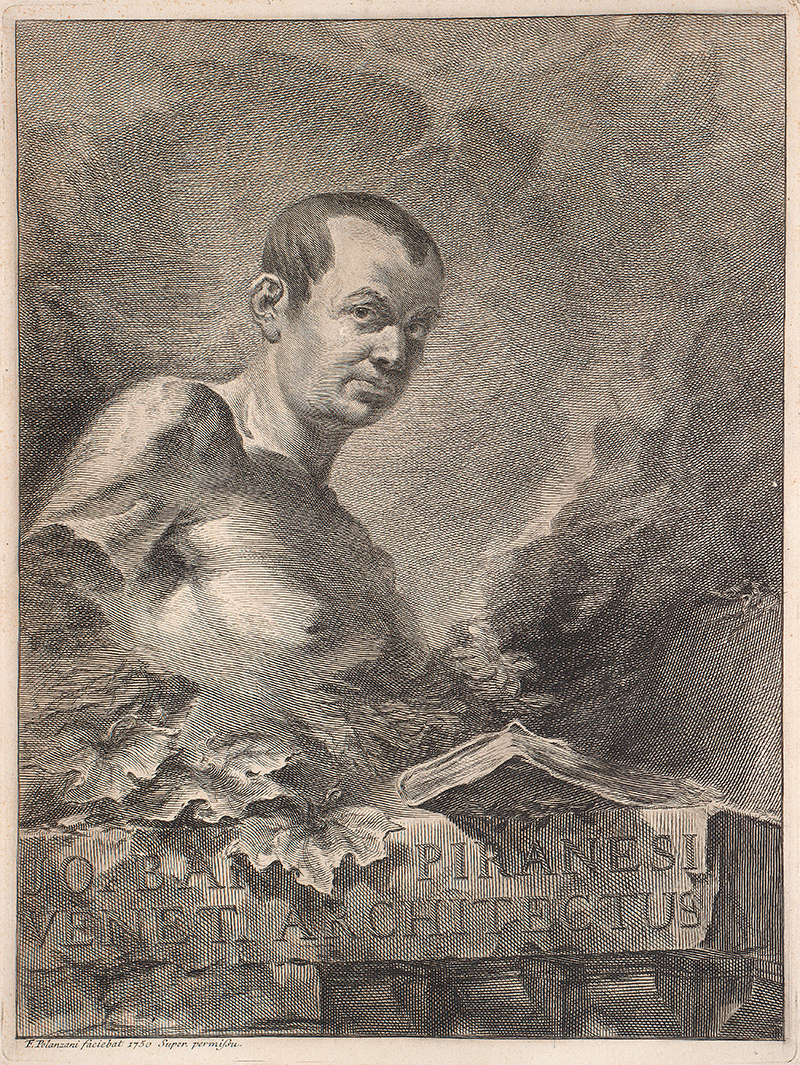 View Image
View Image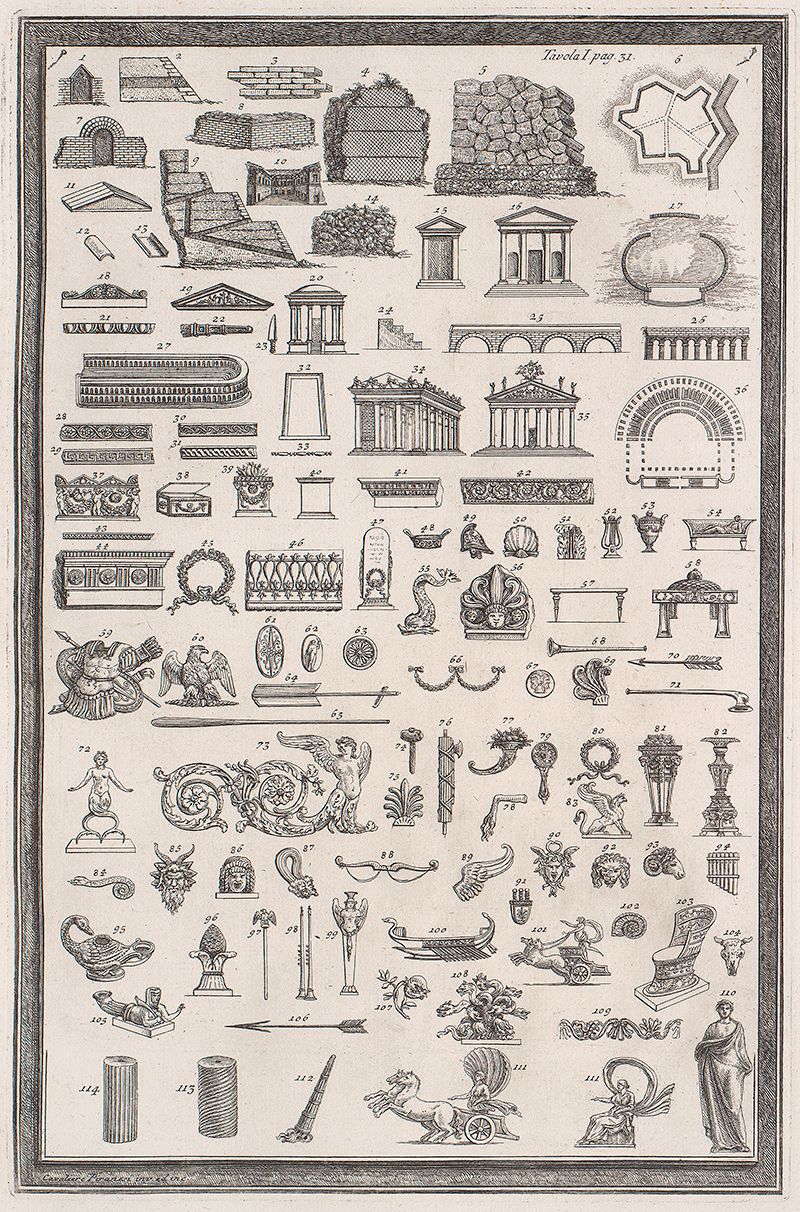 View Image
View Image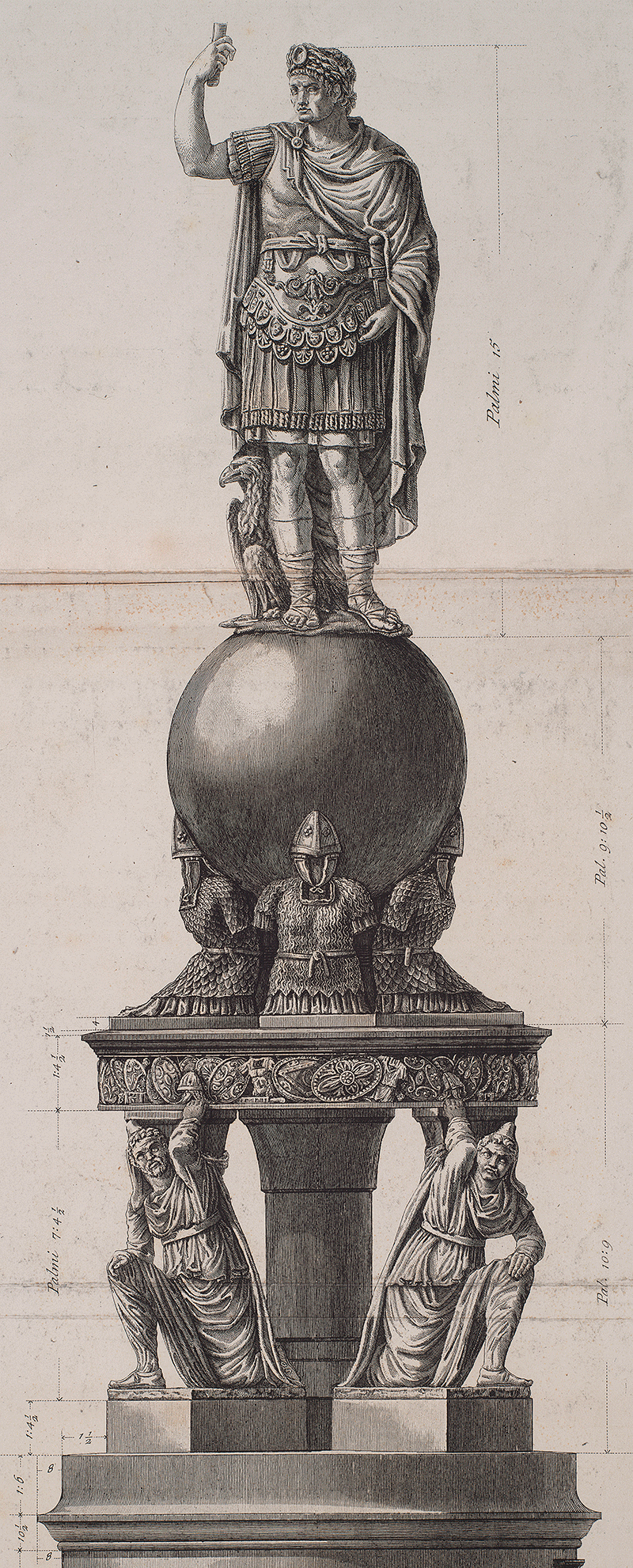 View Image
View Image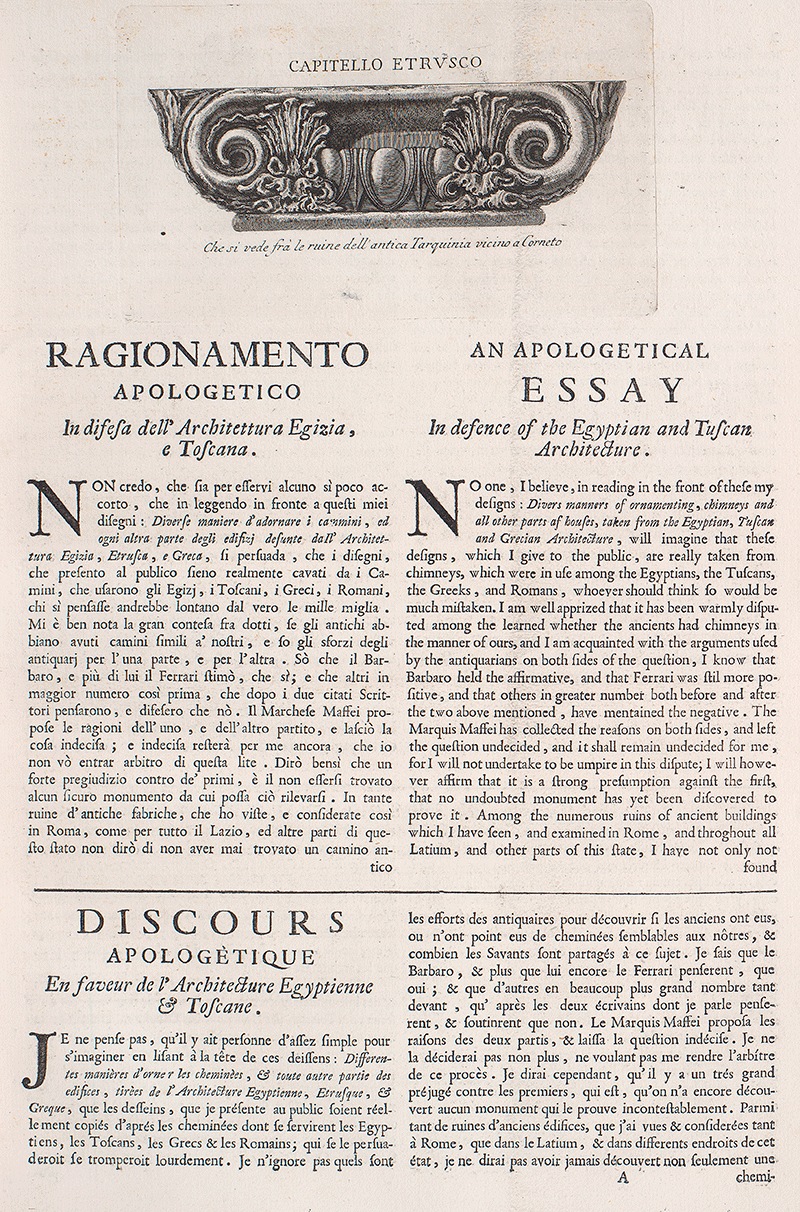 View Image
View Image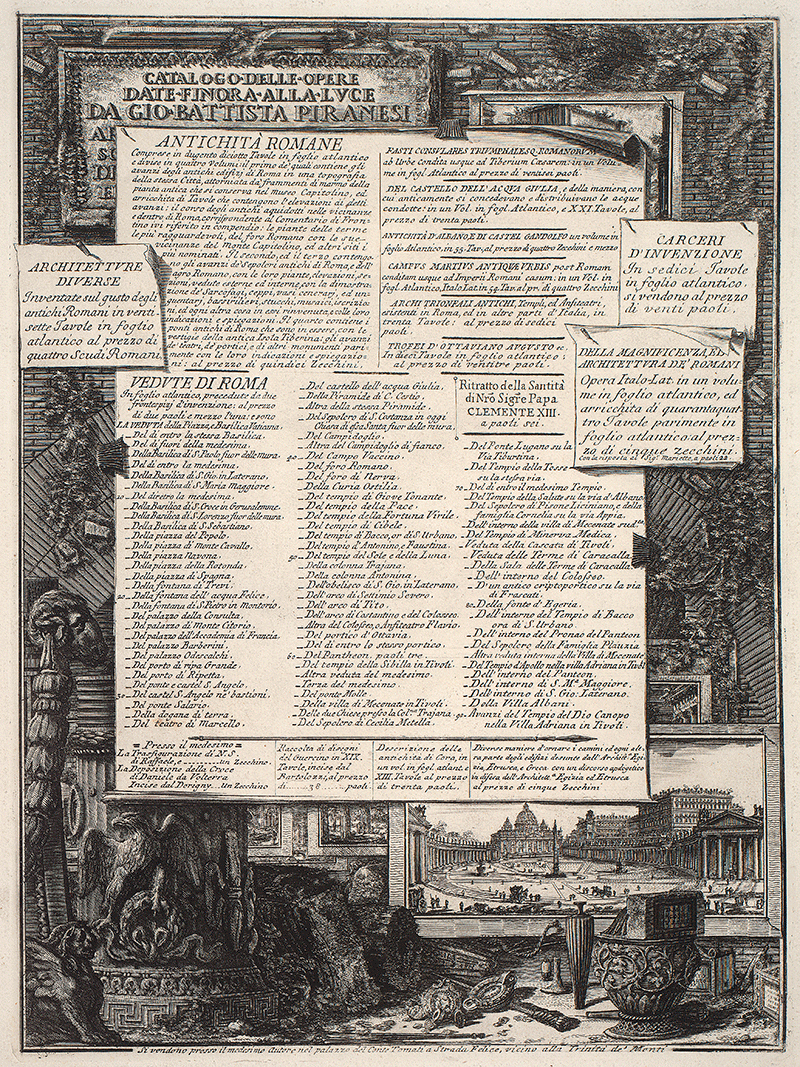 View Image
View Image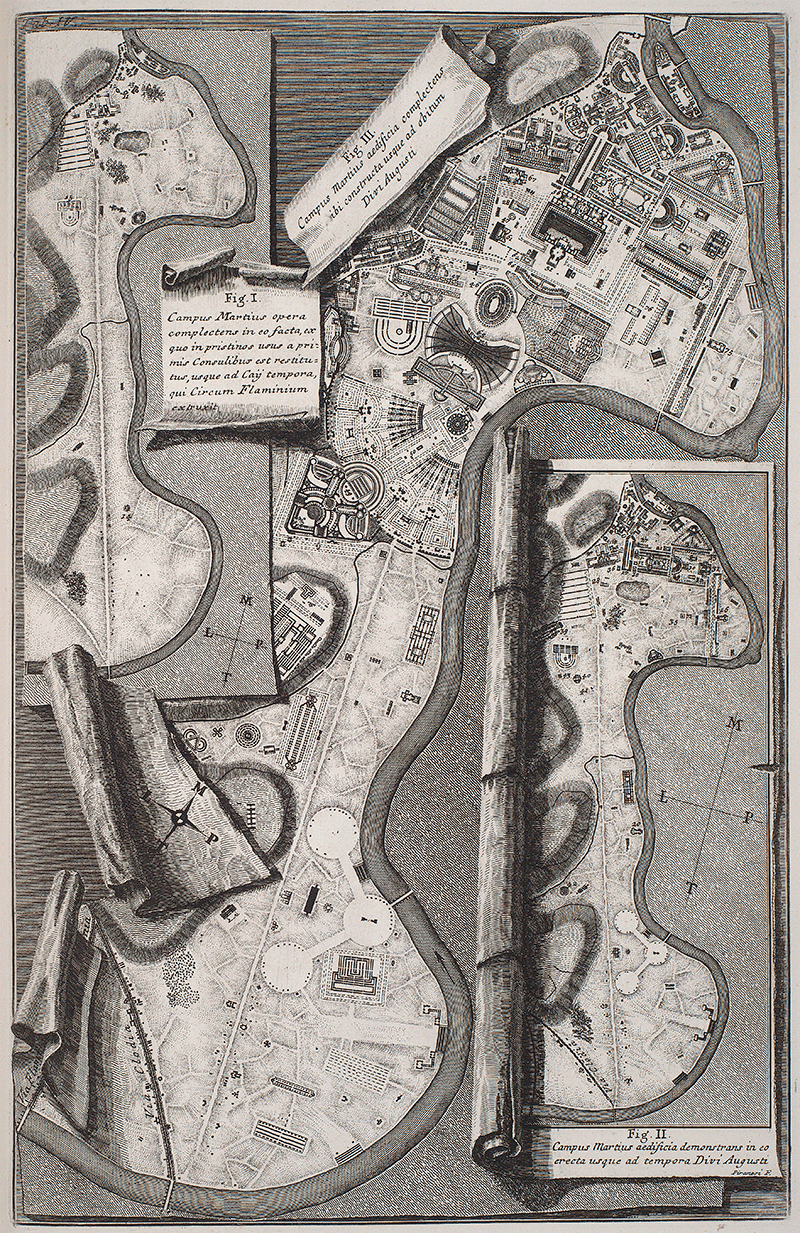 View Image
View Image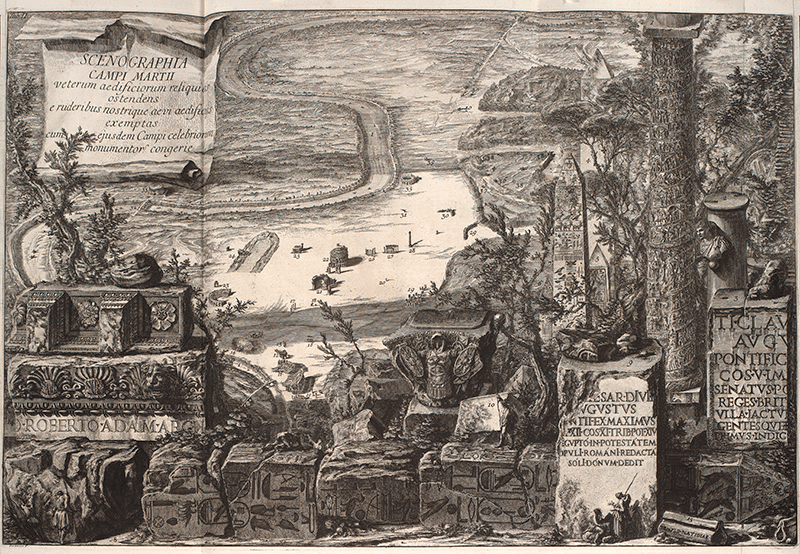 View Image
View Image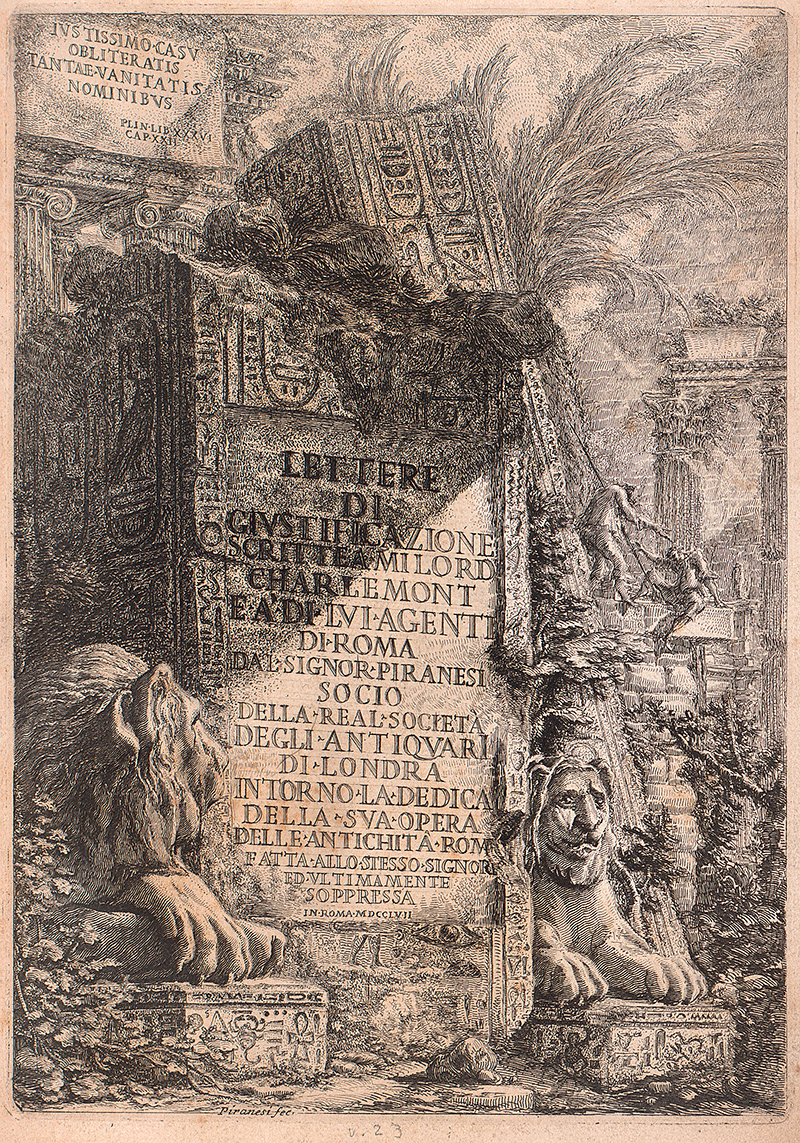 View Image
View Image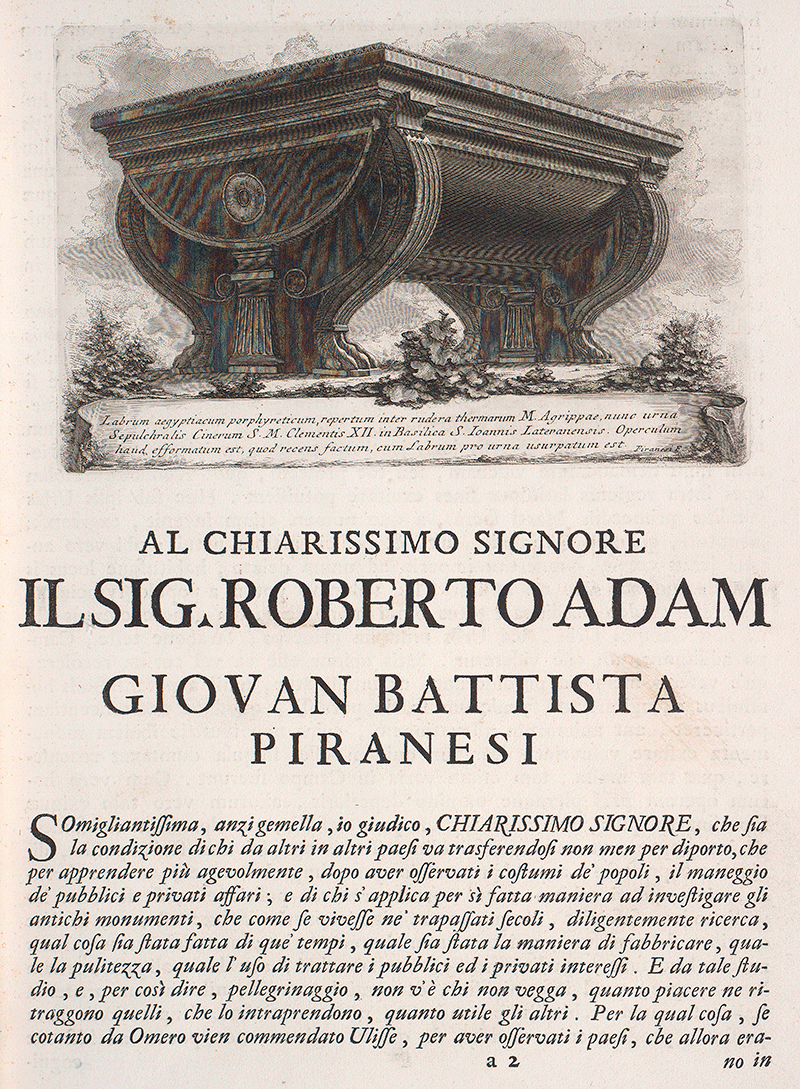 View Image
View Image